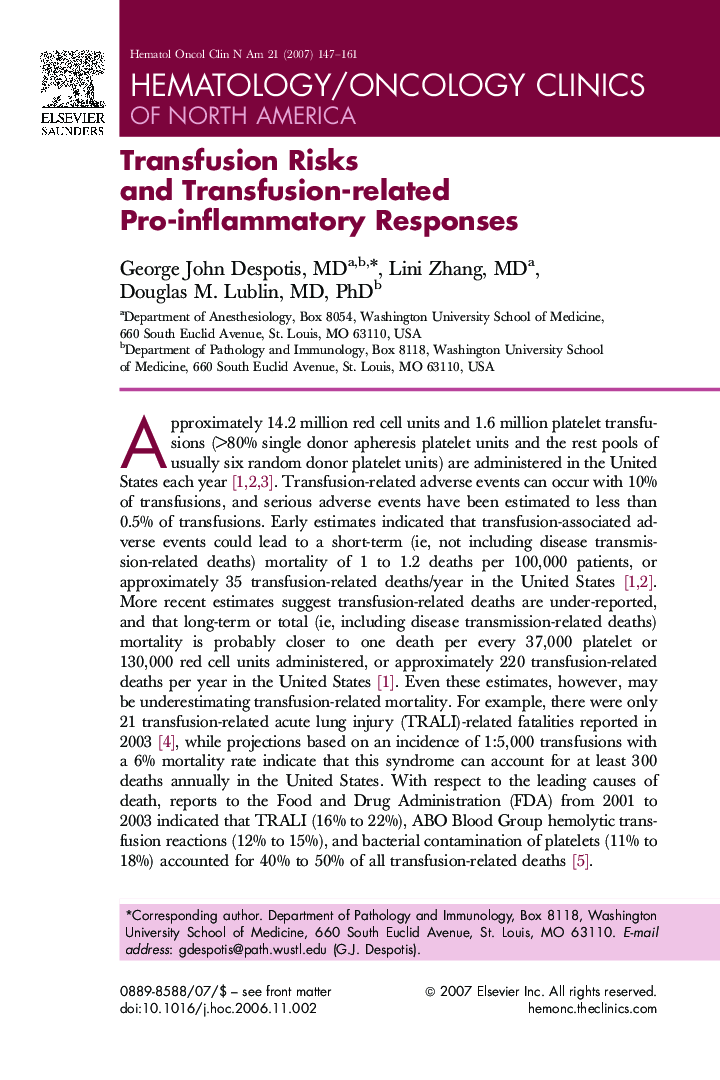| Article ID | Journal | Published Year | Pages | File Type |
|---|---|---|---|---|
| 3332166 | Hematology/Oncology Clinics of North America | 2007 | 15 Pages |
Despite improvements in blood screening and administration techniques, serious adverse events related to transfusion continue to occur, albeit at a much lower incidence. In addition to the development and implementation of new screening and blood purification/modification techniques and implementation of an optimal blood management program, the incidence and consequences of transfusion reactions can be reduced by a basic understanding of transfusion-related complications. Although acute hemolytic transfusion reactions, transfusion-associated anaphylaxis and sepsis, and transfusion-associated acute lung injury occur infrequently, diligence in administration of blood and monitoring for development of respective signs/symptoms can minimize the severity of these potentially life-threatening complications. In addition, emerging blood-banking techniques such as psoralen-UV inactivation of pathogens and use of patient identification systems may attenuate the incidence of adverse events related to transfusion. With respect to optimizing blood management by means of an effective blood management program involving pharmacologic and nonpharmacologic strategies, the ability to reduce use of blood products and to decrease operative time or re-exploration rates has important implications for disease prevention, blood inventory and costs, and overall health care costs.
